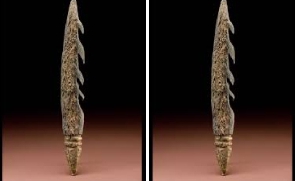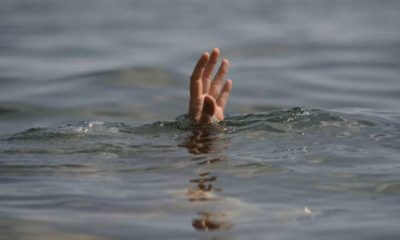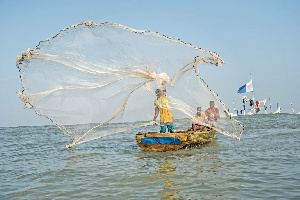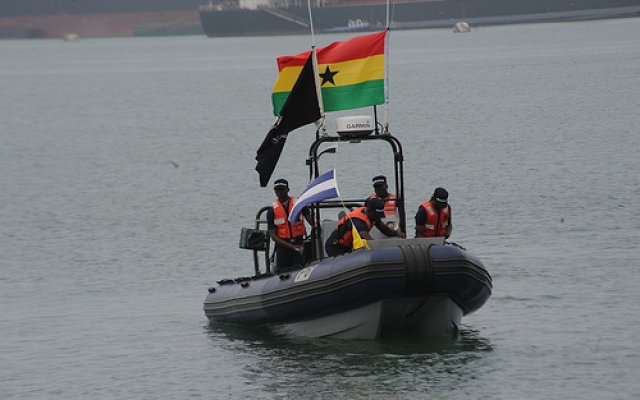News Africa
90,000 years ago, Africans in Congo were undertaking fishing expeditions to catch giant fishes

Evidence of early men eating fish abounds in archaeological findings around the world. They either used their hands or crude methods to satisfy this need for protein from the waters. This may have extended to other parts of Africa and possibly developed extensively in the Eastern part of the continent.
It emerged however that prehistoric men in Central Africa were the first to invent modern tools such as harpoons for their fishing expedition some 90,000 years ago. Researchers connected this evidence from catfish bones excavated from the Semliki River in the Nile River Valley of the Democratic Republic of Congo which were caught with the world’s oldest fishing tool called Semliki or Katanda harpoon.
Earlier scientific analysis suggested the fishing tool was 88,000 years old. Though the archaeological community raised doubts about these findings, similar excavations of other harpoons and artefacts have grounded the evidence that early men in Central Africa used advanced tools for fishing, according to African Maritime History.
The harpoon aided the early men to catch catfish weighing as much as 68 kg enough to meet the protein needs of a community for two days. The harpoons were later used to kill large and fast marine mammals, as reported by African History. The Semliki harpoon is among the family of barbed harpoon heads carved from bones dug by archaeologists in their quest to understand the culture of fishing in the valley.
This sums up the evidence of fishing expeditions being conducted by these prehistoric men using well-crafted daggers and harpoon points which are well-designed and barbed to help in their bumpy catch. The discovery points to the presence of ancient fishing culture in Central Africa. The site where the discovery was made is among five territories that make up the current Congolese province of Kasai-Oriental along with the city of Mbuji-Mayi.
Despite the archeological doubts raised earlier, the climatic conditions of the Katanda territory have further corroborated the evidence of a fishing culture existing in eastern and northern Africa.
There has been an influx of catfish bones following further archaeological excavations in the area. The researchers are of the view that the prehistoric fishermen visited the Katanda territory annually to catch the giant catfish. A cursory look at the ancient harpoons suggests it is no different from what is being used by fishermen in recent times.
Records and data on pre-maritime activities in East Central Africa suggest that sites like Olduvai Gorge in Tanzania, East and West Turkana in Kenya, and Senge in the Democratic Republic of Congo have evidence of fishing activities occurring some 2 million years ago. The disconnect has to do with the fishing tools that were used by these early men in large water bodies.
CLICK HERE TO DOWNLOAD PRESS RADIO MOBILE APP
Researchers are of the view that in the absence of those tools, early men either relied on their hands or sticks, which occasioned the invention of ways to make fishing expeditions easier.
Source: face2faceafrica.com
-

 Lifestyle4 weeks ago
Lifestyle4 weeks agoRoad Safety Authority narrates how buttocks causes road accident
-

 GENERAL NEWS1 month ago
GENERAL NEWS1 month agoWhy 15 police officers stormed Owusu Bempah’s church – Kumchacha narrates
-

 GENERAL NEWS4 weeks ago
GENERAL NEWS4 weeks agoWatch how Ibrahim Mahama rode Honda superbike to pay last respects to late friend
-

 GENERAL NEWS1 month ago
GENERAL NEWS1 month agoHow Offinso residents storm destooled queen mother’s house, demand for new chief
-

 South Africa News1 month ago
South Africa News1 month agoWoman thrown out of a speeding taxi while on her way to work
-

 GENERAL NEWS2 weeks ago
GENERAL NEWS2 weeks agoDeadly clash between youth and navy personnel results in two deaths at Tema Manhean
-

 SHOWBIZ KONKONSAH2 weeks ago
SHOWBIZ KONKONSAH2 weeks agoJunior Pope’s Death: Video of John Dumelo refusing to join canoe for movie shoot over safety concerns resurfaces
-

 News Africa2 months ago
News Africa2 months ago‘Satanically dubious’ – SCOAN releases statement on BBC’s report about TB Joshua, church











